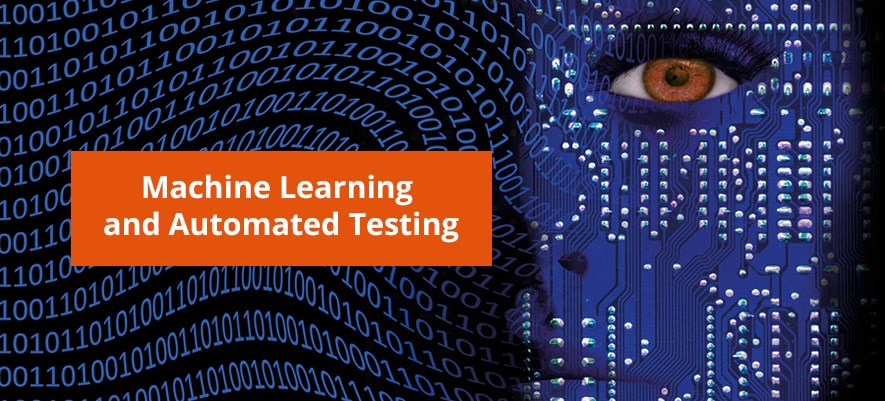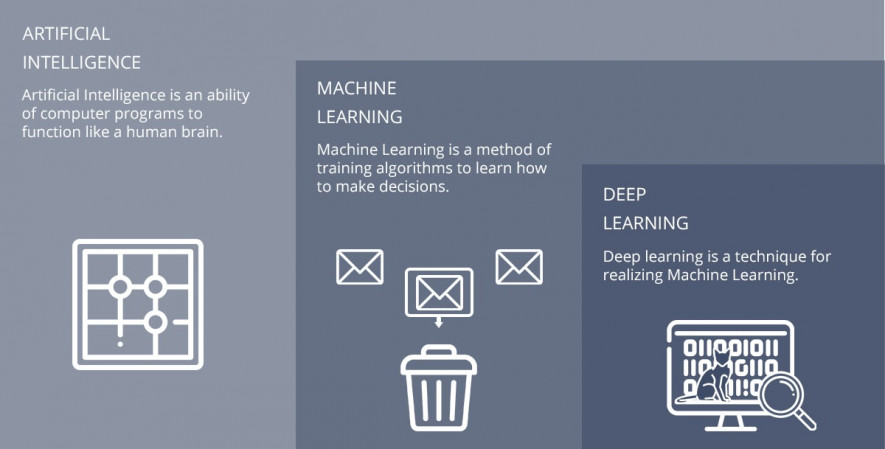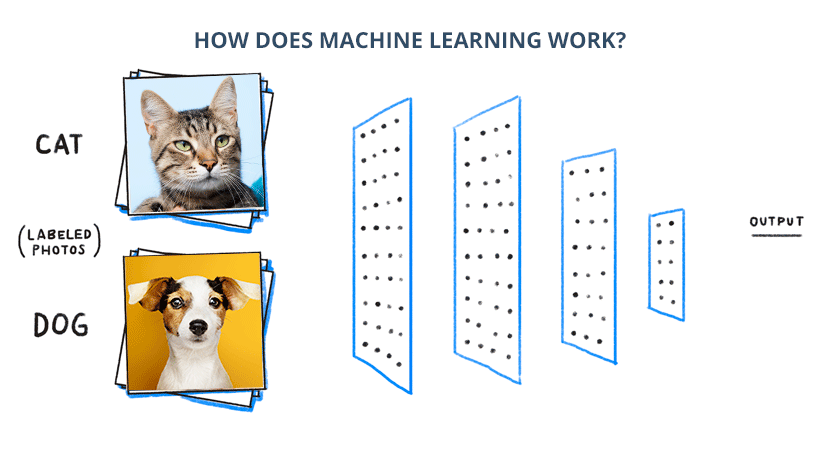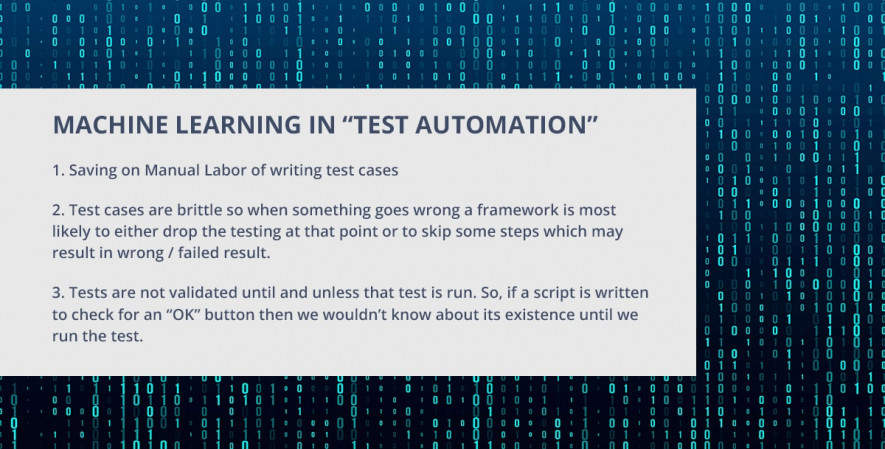- QATestLab Blog >
- QA Trends >
- Machine Learning: explanation and its role for Automated Testing
Machine Learning: explanation and its role for Automated Testing

Since there is a bunch of explanations on the net, Machine learning can be a tricky subject for non-experts. People often mistook and have a blurry understanding of what is AI software testing technologies. Let’s change a situation like this with the QATestLab blog. Here we will discuss the main principle behind one of the most popular AI algorithms and look deeper at what advantages it can bring to Automated testing. So, without further ado, let’s talk science!
What is Machine Learning and how does it work?
Having lots of stereotypes like ‘AI is a Skynet’ or ‘AI is just a set of if/else statements’, we still perceive this term with wide latitude. So what is AI, and what’s then machine learning? How AI is changing test automation? Let’s make a plunge into the world of cutting-edge technology correctly.
Artificial Intelligence is a broad concept, or more precisely an umbrella holding narrower terms and more practical approaches like machine learning and deep learning. Two latest terms are subfields of AI that in fact are the most wide-spread.
To help you understand this gradation of AI concepts better, here is a good scheme:

Let’s sum it up:
- The main aim of AI is to addresses the use of computers to mimic the cognitive functions of humans.
- Machine Learning is a technique for realizing AI.
- Deep learning is a technique for realizing ML. It is the ability of underlying features in data using deep neural networks.
How does machine learning work? To make machines learn we need data. We need lots of data. For what? We need to collect it, build a model and then enable computers to learn on their own. What does it mean on practice is a much bigger question. To clear up all the confusion, let’s take a look at one of the classic examples.

Say we have a task to create a program for recognizing cats. If approaching this task in an old-fashioned way, we need to set a plethora of explicit rules like the color and form of eyes and so on. But what would the program do when you give it a picture of a dog? You need to set all the rules again right from the start. Needless to say, such an approach is time-consuming.
With machine learning, we do things differently: we let computer do this task without explicit programming procedures. For this, we just need to give a machine a large dataset of cat photos and teach it to find its own patterns. It connects the dots, pretty much randomly at first, but you test it over and over, keeping the best versions.
So, what’s then deep learning? This training can be conducted in several stages – each stage is a neural network layer. The more layers – the more complex the model we can build. The architecture of a neural network can consist of many layers — information processing is divided into many stages. This is where the “deep” came from, by the way.
Applications of Machine Learning for Automated Testing
From Google’s language translation app to self-driving cars, Machine learning has bought us a new generation of smart automated software testing tools. Right now a whole spectrum of tasks are being driven by computers rather than manual effort, automated testing is next in the line.
ML-based automation testing can show great results, but only on one condition – you know how to exploit it correctly. It’s not a magical technique you can just apply and see all the work done instead of you. So, when we talk about Automation testing, what then Machine learning can do for it?
In the daily work of testers, there are plenty of cases when results of load testing, performance testing, or functional testing have some valuable patterns. In such cases, ML can come to the rescue and make recognition of these patterns easier.
For this, ML engineer has to determine which features in the data might be used to express valuable patterns. Then he collects and wrangles the data, finds the right data and the right algorithm to feed.
What are the practical applications for this? Here are some of the most popular cases:

Despite the hard work of ML engineers, you can also find ready-made solutions powered by machine learning. These are advanced automated software testing tools like Tricentis and Telerik. You can use them to carry out the process of testing with minimum interventions.
Another vivid example of an advanced AI testing framework for automation is TestCraft. It is a codeless Selenium that allows handling testing procedures faster, as it creates a dynamic test model that can be easily updated to reflect changes to your app.
Final word on machine learning and QA
All-in-all, machine learning has a big impact on making the process of QA faster. Test automation tools coupled with machine learning can execute test cases without the need for any humans to be present, which means tests can be executed 24/7. This increases test coverage and reduces the time required for extensive testing of the product.
Thanks for reading and feel free to share it if you think it deserves to be!
Visit our blog to learn more about the latest trends in the world of technology and Quality Assurance / Quality Control processes.
Learn more from QATestLab
Related Posts:
- Testing the Brains of Tomorrow’s Tech – AI and ML
- QA for AI: Why to Test Already Smart Artificial Intelligence?
- Software Quality Trends in 2026: Key Changes Shaping Modern QA
About Article Author
view more articles
has more than 2-year experience in blogging and copywriting, copyediting and proofreading of web content.
View More Articles






No Comments Yet!
You can be the one to start a conversation.